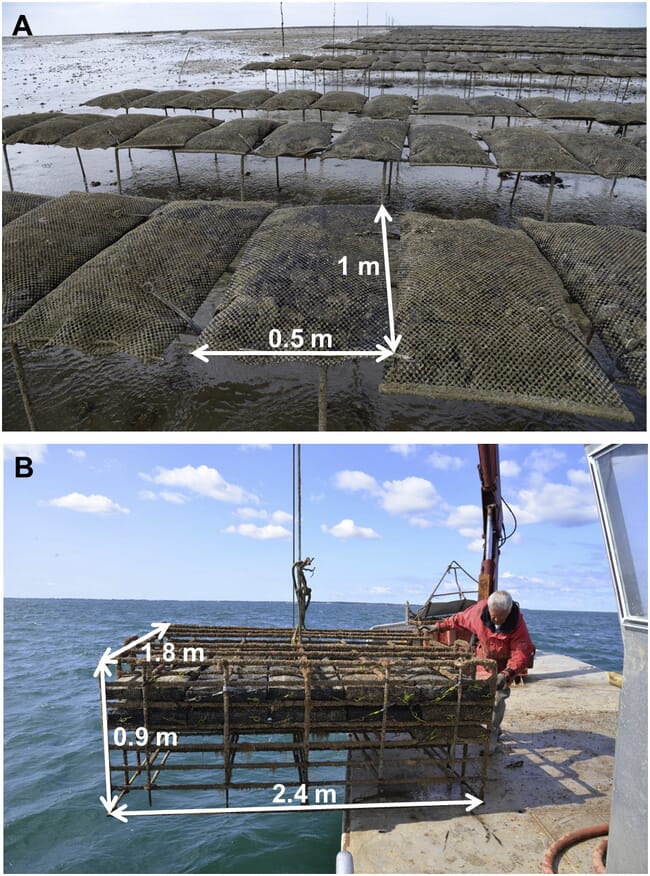French oyster production traditionally takes place in intertidal zones but – as most of the suitable intertidal areas are already under shellfish production or other uses – new entrants to the sector are having to look at alternatives.
As a result, researchers from the Université de Nantes embarked on a study that aimed to find new sites along France’s Atlantic coast that would be suitable for small oyster farmers.
In assessing the feasibility of such offshore production, they considered bivalve growth potential in offshore locations, the technical feasibility of establishing production systems in these conditions and the potential for such operations to secure a licence.

© Barille et al
Oyster spat (juveniles) housed in an experimental offshore cage showed “significantly faster growth, in terms of both weight and length, compared to those in an intertidal cage, mainly due to lower turbidity and full-time feeding capacity (ie constant immersion in the water).”
A combination of Earth Observation data and bivalve ecophysiological modelling was then used to obtain spatial distribution maps of growth potential, which confirmed that offshore sites have better potential for oyster growth than the traditionally oyster-farmed intertidal sites overall, but that this is highly spatially variable.
Consultation with small-scale oyster producers indicated their preference for sites to be in water 5-20 metres deep, and no further than five nautical miles from a harbour.
These criteria were overlaid on maps of various environmental and socio-economic constraints in a spatial multi-criteria evaluation (SMCE), so that potential sites that did not conflict with tourist traffic and bottom trawling.
The end result was that they were able to identify almost 400 km2 of “highly- to very highly-suitable area within which to develop offshore aquaculture using simple, low-cost bottom-cage techniques”.
The researchers also added that the study could be used to “assist the shellfish industry in the Marine Spatial Planning decision-making process, still in progress in this coastal area”.
However, they added that a further obstacle to overcome – as perceived by the farmers at least – is the complexity of the administrative processes necessary to obtain an offshore license.
This is “perceived as a stronger barrier by farmers owning small companies than site selection, technical feasibility, and required investments, and will be crucial to address in order to realistically proceed to offshore cultivation,” the researchers note.
Both the process and the results they argue, “are relevant to other coastal and offshore locations throughout the world and can be adapted for other species”.
Further information
The full article, published in Aquaculture, under the title "Biological, socio-economic, and administrative opportunities and challenges to moving aquaculture offshore for small French oyster-farming companies" can be accessed here.


